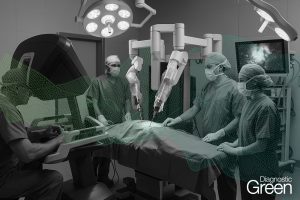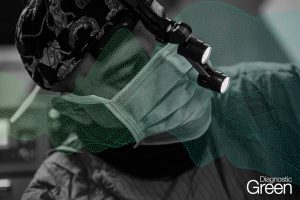
The use of indocyanine green and technetium-99 for dual-tracer sentinel lymph node biopsy in breast cancer
ICG with Tc99 achieves high SLN detection in breast cancer, offering a safe, effective alternative to blue dye with fewer complications.

ICG with Tc99 achieves high SLN detection in breast cancer, offering a safe, effective alternative to blue dye with fewer complications.

ICG-guided cholecystectomy reduces bailout procedures in acute cholecystitis without increasing complications or operative time.

Background/Objective: Sentinel lymph node (SLN) mapping is an accepted technique for the nodal staging of early-stage endometrial cancer. It is carried out commonly by minimally

Combining ICG-VA, FLOW800, and neuro-navigation reduced blood loss and improved recovery in AVM surgery, enhancing safety and efficacy.

Low ICG fluorescence slope and prolonged cold ischemia time predict biliary complications after living donor liver transplantation.

Systemic ICG with NIR imaging lowered POD 3 drainage bilirubin in liver surgery, showing safety and effectiveness in bile leak detection.
ICG angiography influenced section line changes in 16.5% of colorectal cases. Age >60 and TIFV ≥20s were key predictive risk factors.

Takasaki’s method with ICG fluorescence enhances safety and precision in complex laparoscopic liver resections for hepatocellular carcinoma.

Using ICG and technetium-99 improves SLN detection and lowers “empty pocket” risk in early-stage endometrial cancer patients.

ICG cholangiography supports young surgeons in safely performing emergent laparoscopic cholecystectomy for acute cholecystitis patients.

Quantitative ICG analysis detects flap perfusion deficits unseen by clinical assessment, aiding lower extremity reconstruction outcomes.

ICG detects more sentinel lymph nodes than radioisotopes in early cervical cancer, aiding mapping but may risk over-identification.

Intraoperative ICG may reduce open conversion and hospital stay in acute cholecystitis surgery, with no proven drop in bile duct injury.

ICG improves thoracic duct visibility and lowers chyle leak risk in cervicothoracic surgery, outperforming white light methods.

Review shows promise of fluorescence-guided surgery in head & neck cancer but notes need for better standardization and validation.

ICG shows promise as a single tracer for SLN mapping in early ovarian cancer with high NPV but limited sensitivity; ultra-staging aids micrometastasis detection.

NIRF-guided lymphadenectomy improves node yield in esophageal cancer surgery but shows no significant long-term survival advantage over conventional methods.

This meta-analysis finds ICG nearly matches Tc99m + blue dye in SLN detection for vulvar cancer, with SPIO showing promise as a radiation-free alternative.

Using ICG fluorescence and colonoscopy with risk profiling lowers leak risk in colorectal surgery, though low anastomosis height remains a key factor.

This review confirms ICG imaging as a safe, precise tool in pediatric surgery. Standardized dosing and timing could enhance its transformative potential.

SLNB offers a safer alternative to lymphadenectomy in early vulvar cancer. Ongoing research aims to refine selection and improve detection methods.